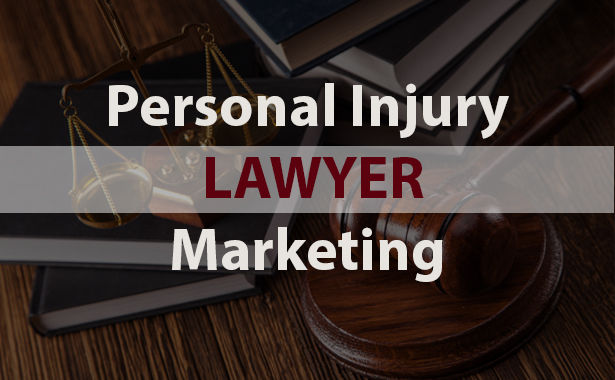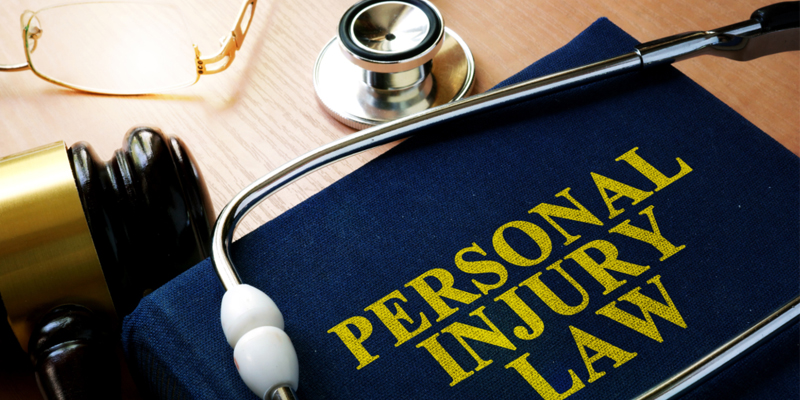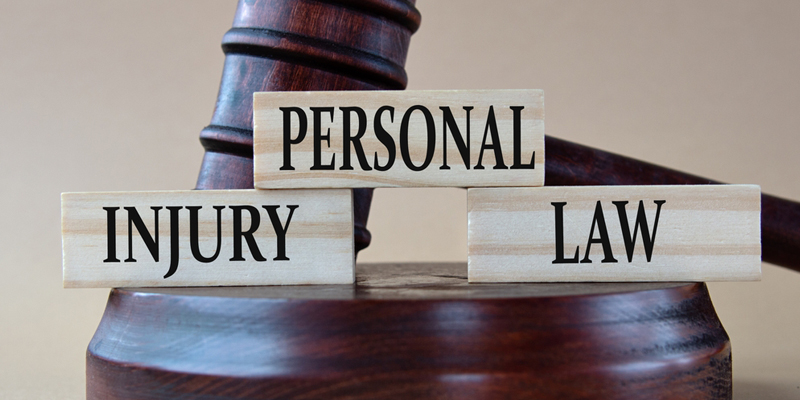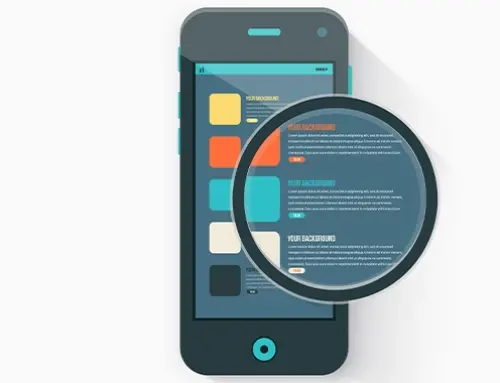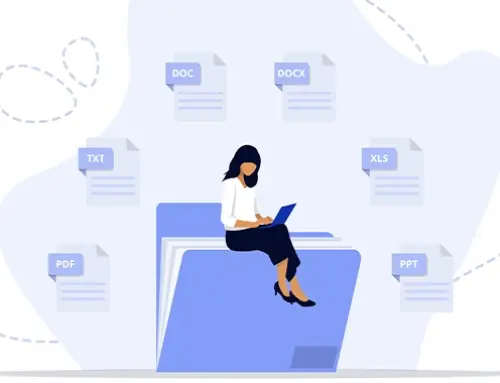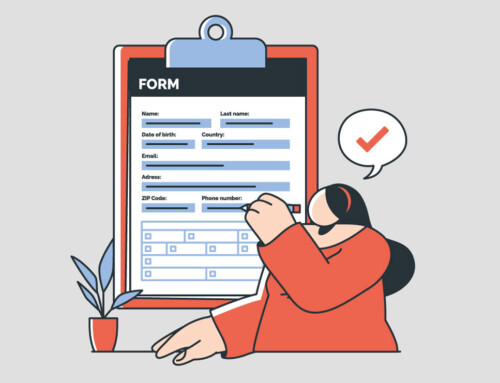Contents
Introduction
In the fiercely competitive legal landscape, personal injury lawyers must recognize the paramount importance of effective marketing strategies to stand out, attract potential clients, and foster long-term relationships. This article about personal injury lawyer marketing delves into the core reasons why marketing is crucial for personal injury lawyers, elucidating its role in differentiation, audience targeting, trust-building, lead generation, and client relationship nurturing.
1. Why Marketing is Crucial for Personal Injury Lawyers
1.1 Establishing Differentiation
The legal realm is saturated, with numerous personal injury firms vying for clients’ attention. Marketing serves as the catalyst for setting a firm apart from the competition.
Communicating unique selling propositions, such as areas of specialization, successful case outcomes, or personalized client care, helps distinguish one firm from another.
1.2 Targeting the Ideal Audience
Identifying and reaching the right audience is pivotal for personal injury lawyers. Marketing facilitates the creation of targeted campaigns to attract clients seeking specific legal services.
Understanding demographic, psychographic, and geographic factors aids in tailoring messages that resonate with the intended audience.
1.3 Building Trust
Trust is the cornerstone of any successful attorney-client relationship. Marketing endeavors, such as showcasing testimonials, case studies, or industry accolades, contribute to establishing trust.
Transparent communication, ethical practices, and consistent branding reinforce a firm’s credibility, fostering a sense of reliability among potential clients.
1.4 Generating Leads
Without a continuous influx of potential clients, a personal injury practice may stagnate. Marketing strategies, including online and offline campaigns, are instrumental in generating a steady stream of leads.
Leveraging various channels, such as digital advertising, SEO, and networking events, enables lawyers to expand their reach and capture the attention of individuals in need of legal assistance.
1.5 Nurturing Client Relationships
Retaining clients and fostering lasting relationships is as crucial as acquiring new ones. Effective marketing extends beyond the initial engagement, emphasizing ongoing communication, client education, and post-case follow-up.
Developing a comprehensive strategy for client relationship management ensures that a personal injury practice thrives not only in acquiring clients but also in sustaining a positive reputation and fostering loyalty.
In essence, marketing is the linchpin that connects personal injury lawyers with their target audience, enables differentiation in a crowded field, and establishes the foundation for trust, lead generation, and long-term Client Relationships. As we navigate through this guide, we will explore actionable strategies to harness the power of marketing for the success of personal injury law practices.
Read more: A Comprehensive Guide on How to Become a Lawyer
2. Preparing for Marketing Success
To embark on a successful personal injury lawyer marketing journey, it is imperative to lay a solid foundation by critically evaluating current strategies, setting clear goals, determining an effective budget, and establishing tracking systems for measurable results.
Evaluating Current Strategies and Setting Goals
2.1 Analyzing Existing Approaches
Before implementing new marketing strategies, it is crucial to assess the effectiveness of current practices. This involves evaluating the performance of previous campaigns, analyzing client acquisition channels, and identifying areas for improvement.
Key performance indicators (KPIs) such as website traffic, conversion rates, and client acquisition costs should be scrutinized to gain insights into the efficacy of existing strategies.
2.2 Setting Clear and Measurable Goals
Establishing specific, measurable, achievable, relevant, and time-bound (SMART) goals is fundamental to successful marketing. These goals should align with the overall objectives of the personal injury law firm.
Examples of SMART goals may include increasing website traffic by a certain percentage, generating a specified number of leads per month, or enhancing the conversion rate on consultation requests.
Determining a Marketing Budget and Tracking Systems
2.3 Allocating a Budget
- Defining a realistic marketing budget is a pivotal step in ensuring that the chosen strategies can be effectively implemented. The budget should encompass various elements, including digital advertising, social media campaigns, networking events, and any other chosen channels.
- Consideration should be given to both short-term and long-term budget allocations, recognizing that certain marketing channels may require sustained investment for optimal results.
2.4 Implementing Tracking Systems
- A robust tracking system is essential to measure the success of marketing initiatives. Utilizing tools like Google Analytics, CRM software, and call tracking solutions enables personal injury lawyers to monitor the performance of different channels and campaigns.
- Tracking not only helps in assessing the Return on Investment (ROI) but also provides valuable data for refining strategies based on real-time insights.
By thoroughly evaluating current strategies, setting well-defined goals, allocating a realistic budget, and implementing effective tracking systems, personal injury lawyers can position themselves for marketing success. The following sections will delve into specific marketing channels and strategies that can be employed to achieve the outlined goals and maximize the impact of marketing efforts.
3. Effective Marketing Channels and Strategies
With a solid foundation laid in the preparation phase, personal injury lawyers can now explore a spectrum of effective marketing channels and strategies tailored to their specific needs. The following section delineates key approaches, ranging from paid advertising and social media to local marketing and search engine optimization (SEO).
Paid Advertising & Google Ads
3.1 Utilizing Paid Advertising
- Paid advertising serves as an immediate and targeted way to reach potential clients. Platforms like Google Ads, Bing Ads, and social media advertising allow personal injury lawyers to display tailored ads to users actively searching for legal services.
- Crafting compelling ad copy, selecting relevant keywords, and optimizing ad placements contribute to the success of paid advertising campaigns.
3.2 Implementing Google Ads
Google Ads, in particular, provides a powerful platform for personal injury lawyers. Leveraging Google’s extensive reach and targeting capabilities enables firms to connect with individuals seeking legal assistance.
Strategies such as geo-targeting, ad extensions, and ongoing optimization are essential for maximizing the effectiveness of Google Ads campaigns.
Social Media Marketing
3.3 Establishing a Strong Social Media Presence
- Social media platforms, including Facebook, Instagram, and LinkedIn, offer personal injury lawyers an avenue to engage with their audience, share valuable content, and build brand awareness.
- Developing a content calendar, leveraging visual elements, and utilizing paid social advertising contribute to a robust social media strategy.
Local Marketing
3.4 Engaging in Community Events
Local events provide personal injury lawyers with opportunities to connect with the community, establish relationships, and showcase expertise. Sponsorship or participation in relevant community gatherings enhances the firm’s visibility.
Active involvement in local charities, sports events, or business associations fosters a positive image within the community.
3.5 Leveraging Local Advertising
Targeting potential clients within a specific geographic area is critical for personal injury practices. Local advertising through newspapers, radio, or community boards helps in reaching the local audience. Utilizing online platforms like Google My Business enhances visibility in local searches and maps.
Legal Directories
3.6 Maximizing Online Visibility
- Legal directories such as Avvo and Lawyers.com are trusted resources for individuals seeking legal representation. Optimizing profiles on these platforms with accurate information, client reviews, and relevant details enhances online visibility.
- Regularly updating profiles and responding to client reviews contribute to a positive online presence.
Search Engine Optimization (SEO)
3.7 Implementing SEO Strategies
- Search Engine Optimization (SEO) is instrumental in improving a personal injury firm’s online presence. Optimizing website content, utilizing relevant keywords, and building high-quality backlinks contribute to higher search engine rankings.
- Regularly updating content, ensuring mobile-friendliness, and providing a seamless user experience are integral aspects of a comprehensive SEO strategy.
Content Creation
3.8 Utilizing Blogs for Information Sharing
- Blogs serve as a valuable tool for personal injury lawyers to share informative content, showcase expertise, and improve organic traffic. Creating content around frequently asked questions, case studies, and legal updates positions the firm as an authoritative resource.
- Consistent and relevant content creation establishes the firm as a thought leader in the personal injury space.
Networking
3.9 Building Valuable Relationships
- Networking remains a timeless strategy for personal injury lawyers. Attending legal conferences, industry events, and community gatherings provides opportunities to build relationships with other professionals and potential clients.
- Genuine engagement, active listening, and strategic follow-ups contribute to the success of networking efforts.
This multifaceted approach to marketing encompasses both online and offline strategies, ensuring personal injury lawyers reach their target audience through various channels. As we move forward, the subsequent sections will delve into additional tactics and strategies to further enhance the impact of marketing efforts in the competitive legal landscape.
4. Additional Tactics for Personal Injury Lawyer Marketing
In addition to the core marketing channels and strategies outlined earlier, personal injury lawyers can benefit from a range of supplementary tactics to augment their visibility, reputation, and client engagement.
Understanding Basic Marketing Terms
4.1 Familiarizing with Marketing Terminology
A foundational understanding of marketing terms is essential. Concepts such as ROI (Return on Investment), CTR (Click-Through Rate), and CPL (Cost Per Lead) play a crucial role in assessing the performance of marketing initiatives.
Familiarity with these terms allows for more informed decision-making and effective Client Communication with marketing professionals.
Importance of Client Reviews
4.2 Building Reputation through Reviews
Client reviews are powerful testimonials that can significantly influence potential clients. Encouraging satisfied clients to leave positive reviews on platforms like Google, Yelp, and legal directories enhances the firm’s online reputation.
Responding promptly and professionally to both positive and negative reviews demonstrates transparency and a commitment to client satisfaction.
Meeting Potential Clients
4.3 Targeted Advertising and Location Presence
Meeting potential clients where they are actively seeking information is crucial. Implementing targeted advertising on platforms frequented by the target audience and establishing a physical presence in relevant locations, such as community centers or local businesses, increases visibility.
Leveraging location-based keywords in online content also improves the firm’s chances of being discovered by local clients.
Active Social Media Engagement
4.4 Connecting through Social Media
Social media is not just a platform for broadcasting; active engagement is key. Responding to comments, addressing queries, and participating in conversations contribute to a dynamic and responsive online presence.
Establishing a consistent posting schedule and utilizing features like live video or Q&A sessions deepen the connection with the audience.
Website Optimization
4.5 Ensuring Ease of Use and Effective Contact
- A user-friendly website is pivotal for converting website visitors into clients. Streamlining navigation, providing clear calls-to-action, and ensuring mobile responsiveness enhance the user experience.
- Contact information should be easily accessible, and online forms or chat options can facilitate seamless communication with potential clients.
Emphasizing SEO Best Practices
4.6 Improving Search Engine Ranking
- SEO is an ongoing effort. Staying abreast of algorithm changes, regularly updating content, and optimizing for local searches are critical SEO best practices.
- Periodic audits of website performance and keyword analysis help in refining the SEO strategy to align with evolving search engine algorithms.
Utilizing Google Business Profile
4.7 Increasing Visibility with Google Business Profile
- A well-optimized Google Business Profile enhances local search visibility. Ensuring accurate business information, collecting and responding to client reviews, and leveraging Google My Business features contribute to improved online presence.
- Regularly updating business hours, services offered, and posting relevant updates on the profile keep information current.
Implementing SEM Ads and Local Services Ads
4.8 Targeted Outreach with SEM Ads
Search Engine Marketing (SEM) ads complement organic search efforts. Creating targeted SEM campaigns, including Local Services Ads on platforms like Google, enables personal injury lawyers to reach users actively searching for legal services..
Exploring Video Marketing
4.9 Educating and Engaging through Video
Video content is a dynamic way to educate and engage potential clients. Creating informative videos on legal topics, case studies, or frequently asked questions adds a personal touch to the firm’s online presence.
Platforms like YouTube and social media channels offer opportunities for video dissemination and audience engagement.
Public Speaking Opportunities
4.10 Enhancing Firm Visibility and Credibility
Public speaking engagements provide a platform to showcase expertise and build credibility. Participating in legal conferences, seminars, or community events establishes personal injury lawyers as authoritative figures in their field.
Sharing insights on relevant legal topics and engaging with the audience fosters trust and brand recognition.
Incorporating Traditional Marketing
4.11 Broadening Reach with Traditional Channels
- While Digital Marketing is prevalent, traditional channels still hold value. Billboards, print advertisements, and direct mail campaigns can broaden the reach of a personal injury law firm, especially in local markets.
- A well-designed billboard or a thoughtfully crafted print ad can capture attention and contribute to brand recall.
Creating and Distributing Helpful Content
4.12 Offering Free Content on Personal Injury Issues
- Sharing valuable content for free is a strategy that builds trust and positions the firm as an ally to potential clients. Creating informative guides, eBooks, or webinars on personal injury topics demonstrates expertise and fosters goodwill.
- Distributing this content through various channels, including the firm’s website and social media, expands its reach and impact.
Sponsoring Local Events
4.13 Connecting with the Community
Community involvement goes beyond attending events; sponsoring local gatherings, sports teams, or cultural events aligns the firm with the community’s values.
Visible support for local causes fosters a positive image and can lead to increased brand loyalty within the community.
Ensuring Effective Client Follow-Up Strategies
4.14 Building Long-Term Relationships
Client engagement doesn’t end with case resolution. Implementing effective follow-up strategies, such as periodic check-ins, newsletters, or exclusive client events, keeps the firm top of mind and strengthens Client Relationships. Seeking feedback and addressing any post-case concerns promptly contribute to overall client satisfaction.
As personal injury lawyers navigate the evolving landscape of legal marketing, these additional tactics offer a comprehensive approach to enhance visibility, credibility, and client engagement. The synergy of these strategies contributes to a well-rounded marketing plan that adapts to the dynamic needs of the legal industry. In the subsequent section, we will summarize key strategies for successful personal injury lawyer marketing and emphasize the importance of adapting these strategies to the specific needs and values of each law firm.
Adapting Strategies to Firm-Specific Needs and Values
While these strategies provide a comprehensive framework for personal injury lawyer marketing, it is crucial for law firms to tailor them to their unique needs, values, and target audience. Each firm possesses distinct strengths and characteristics that can be highlighted to create a compelling and authentic brand identity.
RunSensible’s Legal Case Management and CRM Solutions
As personal injury lawyers embark on their marketing journey, it’s essential to leverage tools that enhance efficiency and client management. RunSensible’s legal case management and CRM solutions provide a robust platform to streamline operations, track leads, and ensure effective client communication. Discover how RunSensible can complement and elevate your marketing strategies to achieve greater success in the competitive legal landscape.
In conclusion, the realm of personal injury lawyer marketing is multifaceted and continually evolving. By implementing a combination of the outlined strategies, adapting to changing trends, and staying true to the values of the firm, personal injury lawyers can establish a powerful and lasting presence in their respective markets.
Conclusion
In the dynamic and competitive landscape of marketing for personal injury law firms, effective marketing strategies are indispensable for law firms striving to distinguish themselves, connect with their target audience, and foster enduring client relationships. This guide has explored a diverse array of strategies encompassing online and offline channels, ensuring a holistic approach to marketing success.
FAQs
1. What are the Key Performance Indicators (KPIs) for evaluating marketing success?
Key performance indicators (KPIs) serve as measurable metrics to assess the effectiveness of marketing strategies. Common KPIs for personal injury lawyers include:
- Conversion Rate: The percentage of website visitors who take the desired action, such as filling out a consultation form.
- Client Acquisition Cost (CAC): The cost associated with acquiring a new client through marketing efforts.
- Website Traffic: The number of visitors to the firm’s website, indicating overall online visibility.
- Return on Investment (ROI): The ratio of revenue generated to the cost of marketing campaigns.
2. How can personal injury lawyers effectively manage client reviews?
Managing client reviews is crucial for building a positive online reputation. Strategies include:
- Encouraging Reviews: Actively seek reviews from satisfied clients through follow-up communications.
- Timely Responses: Respond promptly to both positive and negative reviews, demonstrating engagement and professionalism.
- Transparency: Address concerns openly, showing a commitment to client satisfaction.
- Regular Updates: Keep profiles on legal directories updated with accurate information.
3. How can personal injury lawyers optimize their Google Business Profile?
Optimizing a Google Business Profile enhances local search visibility. Key steps include:
- Accurate Information: Ensure business details, including contact information and services offered, are up-to-date.
- Client Reviews: Encourage satisfied clients to leave reviews, and promptly respond to feedback.
- Regular Updates: Post relevant updates, events, or promotions to keep the profile dynamic.
- Utilize Features: Leverage features such as Q&A, services offered, and business hours to provide comprehensive information.
Disclaimer: The content provided on this blog is for informational purposes only and does not constitute legal, financial, or professional advice.
